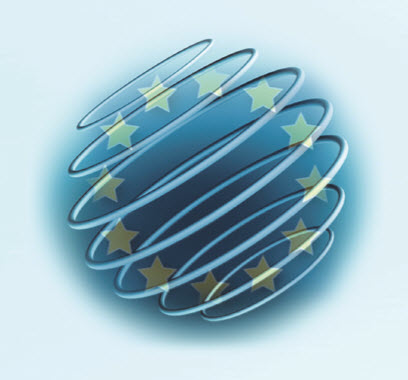- 400 years of canals
- 125 years of Concertgebouw and the Royal Concertgebouw Orchestra
- 175 years of Artis Royal Zoo
- The reopening of the Rijksmuseum and many other unique events in one year
- From the historic heart to the high-tech buildings
- Lively, creative and informal atmosphere
- More canals than Venice
- More bridges than Paris
- 7000 monumental buildings
- world-class museums
- and much more, see: iAmsterdam 2013
TWO UNIVERSITIES AND MANY LABORATORIES
In the 17th century Amsterdam was a stockpile of trading goods, but these days knowledge is also being generated. With two highly developed universities, Amsterdam is now firmly on the world map as a centre of knowledge for important scientists and is an attractive meeting place for anyone involved in science and research. Partly due to its central location on the edge of Europe it forms a 'market place where knowledge and ideas can be exchanged in an efficient manner. Amsterdam is a city that takes high aims at becoming one of the first Smart Cities in the world. Take a visit at the Amsmarterdam website.HISTORIC HEART
Amsterdam may be a place of importance, but it is also a city of human dimensions. It was founded in the Middle Ages near a dam in the river Amstel. Its true blossoming period came at the start of the 17th century, when it became the world's largest centre of trade and art. Nowadays, the old part of the city, known as the 'Grachtengordel' (canal ring), is still amazingly intact. But it is by no means an open-air museum. Instead, it's the vibrant heart of the city, only with a more friendly atmosphere than you might expect.OUTSTANDING CULTURE
Amsterdam's unique character is well represented in its cultural life. Where else in the world will you find an enormous collection of 17th century masterpieces of painting, Van Goghs, a major museum of modern art and a world-famous orchestra hall all on one square? The city of Rembrandt has always been a significant centre of the art world.COLOURFUL PEOPLE
People make Amsterdam the unique city it is. In the 'Golden Age' of the 17th century it was a metropolis of trade and art, in the sixties it was Europe's 'magical centre'. Amsterdam has always set itself aside from other European capitals. It still is a place of choice for many young and creative companies and associations, all attracted to the city's possibilities. Amsterdam also deserved its nickname 'Mokum', the Yiddish word for "place" or "safe haven".BUSINESS WITH PLEASURE
Amsterdam is not only the city of the Dutch East India Company (The "VOC"), the world's first multinational company, but also of Philips' new international headquarters. Many other international companies also have their head offices here. And with reason: Amsterdam has a consistent high score in the European Cities Monitor for companies. International advertising and design companies prefer Amsterdam for its qualities in attracting young creative people. Because of its relative small size, excellent infrastructure, Amsterdam combines business with pleasure and the merits of many other European capitals with the ambience of a small town. Come over and experience it for yourself!AMSTERDAM, HISTORICAL AND CULTURAL CITY
Amsterdam, with its 800,000 inhabitants, is a city with a highly individual atmosphere, gener-ated largely by its beautiful canals, its sense of energy and purpose, its cultural treasures and its opportunities for recreation and entertainment. Amsterdam is a lively city, young at heart. No other European city can rival Amsterdam's 7,000 historic buildings dating from as far back as the 14th century. The well-known symmetrical rings of canals with over 1,000 bridges summon up visions of The Netherlands's Golden Age. On the cultural front, Amsterdam has 42 museums including the Rijksmuseum, the Van Gogh Museum, the Stedelijk (Municipal) Museum and the Scheepvaartmuseum.TOURISM and AMSTERDAM
Most hotels will provide you with maps and suggestions for sight-seeing. Some suggestions:- After ten years of reconstruction, the National Museum (Rijksmuseum) reopened in April 2013. Built in 1876 according to a design by architect P.J.H. Cuypers, Amsterdam's Rijksmuseum is the largest museum in the Netherlands. It features a famous collection of works by Rembrandt including "The Night Watch", Vermeer and Frans Hals as well as Delftware, sculpture, Asian art and prints. Daily 9:00-18:00. We suggest you to order your ticket on-line.
- The Van Gogh museum was renovated during the first half of 2013 and reopened om May 1. A visit to the Van Gogh Museum is a unique ex-perience; come as up-close-and-personal with the most famous Dutch artists of all time as you can get. The museum contains the largest collection of paintings by Vincent van Gogh in the world. You will be taken on a journey through his life work, and his contemporaries will not be forgotten. This is your chance to see for yourself how his art was influenced by the developments in his personal life. After your visit you will understand more of the man behind the famous paintings such as the Sunflowers or the Yellow House, and the life he led.
- The Naval Museum (Scheepsmuseum) has an extensive cultural history collection, which includes paintings, ship models, sculptures, archaeological artefacts, clothing, weapons, historical prints, photographs, etc.. The hundreds of thousands of items from the past collectively give a visual account of the Dutch naval history within a global context. You can visit a copy of the VOC three mast ship "The Amsterdam".
- Anne Frankhuis: Anne Frank was one of the most renowned and most discussed Jewish victims of the Holocaust. Acknowledged for the quality of her writing, her diary has become one of the world's most widely read books, and has been the basis for several plays and films. The Anne Frank house is the place where she hid during the second world war and is the place where she wrote her diary.
- Take a stroll along the canals and look at floors 2 and up (caution: do not trip), hotspots are the Herengracht near the Amstel, Spiegelgracht and Keizersgracht. Especially when night falls, you can peak inside (most Dutch do not close their curtains) and watch the often beautiful ceilings.
- Explore the 'Jordaan' (stemming from the French Jardin - garden because the streets and canals are named after flowers). The neighbourhood had its ups and downs; even in the early 1900's revolts started here. The last decades, the area is up-scale with nice boutiques, art shops and restaurants. Keep a watch at the inner-block entrances ("hofjes").
- Visit the Begijnhof. A breathtaking, silent place in the middle of the noisy centre of Amsterdam.
- Visit the famous, daily flee market at the Waterlooplein (near the town hall / opera building or Stopera). It is just around the corner of the Rembrandt House, his atelier.
- Take a canal tour and take a peek from the water side into the thousands of canal boats.
- Take pictures of one of the unique Dutch multi-story bike parkings (at the left side above the water when facing the front entrance of the Central Station).
- Take a visit to a couple of the local, traditions pubs at night (do not forget that you have to take a ferry in the morning).
- Add many more days to your CRITIS 2013 visit as there are many more enjoyable things to do in Amsterdam!
CAUTION
- There are more bikes in Amsterdam than people. Half of them are temporary placed at locations where they can be bolted to the "earth" in order to prevent theft. Three of four locks and heavy chains may do the trick (take photo). The other half of the bikes are in a state of disintegration or are submerged in the canals. Biking occurs almost everywhere around you except where you would expect bikes to be or to halt for a red traffic light. Amsterdam bikers drive their bikes like circus artists on the side curbs, bridges and streets neglecting traffic signs and traffic lights. Most of the time they are able to barely miss tourists like you. Therefore, be aware that you may be hit by a bike when you make an illogical step sideways or at a minimum be shouted at when the biker tries to regain his/her balance. Even worse, some bikers think that they have a license to kill tourists with their bike.
- In coffee shops you cannot get coffee.
- Although downtown Amsterdam is pretty safe, always maintain a good situational awareness. As in all major cities around the globe, pickpockets do operate in the busy touristic areas of town, the metro, trams and buses.
- The canals are not very deep and often littered with old bikes. However, getting out of a canal after an involuntary drop into the water is not very easy. Therefore, do not trip into the water.
ADDITIONAL INFORMATION
For additional tourist information: visit the website of the Amsterdam Tourist Board. For local transport during the conference, see Venue.





